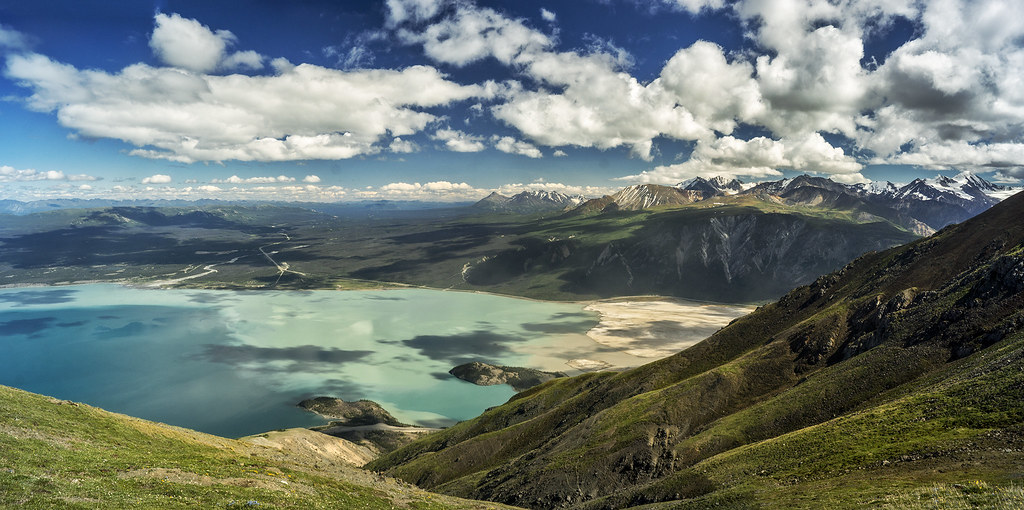Kluane National Park and Reserve is a natural wonder located in the southwest corner of the Yukon Territory, 150 kilometers / 93,2 miles west of Whitehorse. Established in 1976, this 21,980 km2 park is a destination for adventure seekers, nature enthusiasts, and history buffs alike. With unclimbed peaks, vast ice fields, clear lakes, glaciers, and spectacular wildlife, the park offers visitors an unparalleled experience.
The park is home to Canada’s highest peak, Mount Logan, and is named after the Yukon’s largest lake, which borders the park. In addition, the park and park reserve, together with Tatshenshini-Alsek Wilderness Provincial Park in British Columbia and Glacier Bay and Wrangell-St. Elias National Parks in Alaska form an international UNESCO World Heritage Site covering over 98,391 square kilometers / 379.88,97 square miles.

The area has been home to Southern Tutchone-speaking First Nations since the last Ice Age, and today is known as the traditional territory of three First Nations: Champagne and Aishihik, Kluane, and White River. The arrival of explorers, prospectors, climbers, and hunters in the late 1800s led to the development of the Kluane Game Sanctuary in 1943. The completion of the Alaska Highway, which runs along the park’s eastern boundary, opened the area to further development.
The park offers a range of activities, such as camping at Kathleen Lake, hiking and climbing, and fishing (June-August). Winter activities include cross-country skiing, ice fishing, and camping. The nearby towns of Haines Junction and Destruction Bay provide essential services for visitors.
Kluane National Park and Reserve is also a unique blend of natural beauty and human history, with the presence of the Southern Tutchone-speaking First Nations and their land claims agreements with the federal government. The park is a testament to the importance of preserving natural beauty and cultural heritage for future generations to enjoy.
Did you know about Kluane National Park and Reserve?

- Kluane National Park and Reserve are located southwest of the Yukon Territory, Canada.
- The park was established in 1976 and covered an area of 21,980 square kilometers / 8,496.52 square miles.
- The park is home to Canada’s highest peak, Mount Logan, which stands at 5,959 meters / 19,551 feet.
- The park is known for its vast ice fields and glaciers, including the Kaskawulsh Glacier, one of the world’s fastest-moving glaciers.
- The park is home to a diverse range of wildlife, including grizzly bears, caribou, Dall sheep, mountain goats, wolves, and moose.
- The park is also home to various birds, including golden eagles, peregrine falcons, and gyrfalcons.
- The park and park reserve, together with Tatshenshini-Alsek Wilderness Provincial Park in British Columbia, Glacier Bay, and Wrangell-St. Elias National Parks in Alaska form an international UNESCO World Heritage Site covering over 98,391 square kilometers / 379.88,97 square miles.
- The park is also home to several Southern Tutchone-speaking First Nations and has been home to these First Nations since the last Ice Age.
- The park offers a variety of activities, such as camping, hiking, fishing, and skiing.
- The park is also an important site for environmental research, focusing on monitoring and assessing the park’s ecosystems and species and the effects of climate change.
Google Maps of Kluane National Park and Reserve
This embeddable Google Map generated for free on Canada Maps.com